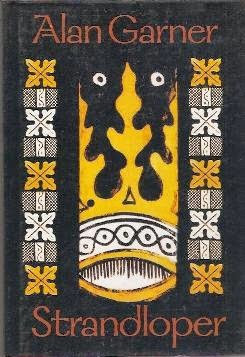 |
| The Lovell Radio Telescope at Jodrell Bank |
 |
| The edition I first read |
Then I journeyed to Britain in 2013 to attend a conference in Oxford and to conduct research for my dark ages novel. One of the people at the conference, when he heard about my novel, suggested I come and stay with him in Manchester so he could show me Alderley Edge, which had a Merlin legend associated with it. This legend figured heavily in Weirdstone, and so I became interested in reading more by the author. I spent much of last year reading all Garner’s novels and anything else of his I could find, and was blown away by his writing: his stunning use of language, including Cheshire dialect, his evocation of the Cheshire landscape, and his weaving of the everyday and the mythic, what I have come to call ‘mythic realism’. So, when I found out he was giving this talk, the last he will ever deliver, on a date I happened to be back in the country, I endured the six-hour round trip to hear it.
 |
| Alderley Edge: One of the candidates for the Black Gates, behind which the Sleeping King and his Knights might be found |
 |
| Alan Garner, photo by Gary Carlton from the Jodrell Bank website |
- Creativity is risk, play and intuition.
- Creativity is not a job, but a state of being…in service to something else.
- Art makes people feel.
- Intelligence observes immensities [as in the observations of the radio telescope at Jodrell Bank], and imagery [the work of art] translates the observations so they provide emotional understanding.
- Imagery/art informs science, and the reverse.
- Creativity is prayer…and prayer is a dialogue with the numinous.




I loved – and was shocked by – his novel The Owl Service when I first read it as a child. Both feelings have stayed with me. Wonderful writer.
How evocative "late at night, through mountains on a winding road, in rain that formed a tunnel in the headlights," Not sure if you planned it but so like the cover of Garner's book Boneland.
I'm enjoying these posts. What a great experience. Glad to hear you are taking time to replenish your imagination. Looking forward to seeing you and sharing stories about all this story time. Tanya x
Hey Earl, it sounds great. I'm interested in this term mystic realism. A fuller expanation please? Also, car hire, are you picking up in Aberystwyth?
Dear Catherine, Nadine, Tanya and Elizabeth, Thanks for your comments. Catherine: Yes, that novel is amazing. Nadine: No, I hadn't planned it, but I see what you mean. Tanya: I look forward, also, to catching up. Elizabeth: 'mythic realism' is a term I use for those writers using myth as almost a ground not just to the story but to the metaphysics behind the universe of the story. I haven't really thought it through completely, yet. We can discuss it when I get back. And, yes, I picked up the car in Aberystwyth. Make sure you book a car from Europcar, which is in town, not Hertz, which is a 40 min walk out of town. Everyone: I hope your writing is going well. Cheers, Earl
How I wish I'd been at that talk. Thanks so much for your re-presentation of it. I wrote something on Boneland when I read it last year. I really have to re-read all his work. I will have to read Strandloper, I've never read it.
http://nerdalicious.com.au/books/alan-garner-boneland-finding-magic-through-the-wreckage-of-time/
Dear C S Hughes, Thanks for your comments about my blog. Thanks, too, for the link. I loved your analysis of Boneland, which is evocative and perceptive. And you will enjoy Strandloper, as haunting as his other later books.